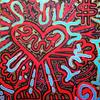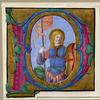The Witty World of Patrick Hughes
- March 16, 2023 14:01
“I believe they have an experience, unlike any other, in which they see the impossible happen. And I hope that they then think a bit about why that is. If lookers and seers experience the paradoxical and reciprocal relation between parts of the world and themselves, they get a sense of the flow of life.” — Patrick Hughes, 2014
Leading Figure in Contemporary Art
Patrick Hughes, an artist well-versed in art history and interested in science and philosophy, originally aspired to teach literature. However, he was inspired by authors who used absurd and vivid imagery to create humor, which sparked a vocational shift to fine art. Hughes' prolific career and artistic innovations, particularly his creation of reverspective, have left an indelible mark on the art world by transforming the ways in which perspective can be visually depicted and experienced.
Born in 1939, London-based artist Patrick Hughes completed formal training at the Leeds College of Art before beginning his career. He developed his first reverspective work in 1964 for the Institute of Contemporary Arts in London. Entitled Sticking-Out Room, Hughes’ hypnotic vision of an interior room seemed to recede in space, marking the beginning of the artist’s long fascination with perspective illusions. Today, Hughes’ work resides in prestigious collections including the British Library and the British Academy in London. Both poetic and prosaic, Hughes’ oeuvre continues to captivate audiences in a tangible way that very few artists can claim.
Technical Innovation
Hughes coined the term reverspective for his unique constructions, which he describes as “perspective in reverse.” He builds on the idea of one point perspective, where the artist creates the illusion of receding space and dimensionality with converging lines upon a single vanishing point on the horizon line. Though he still abides by a strict vanishing point, Hughes effectively reverses this concept by bringing these lines forward into space using a three-dimensional plane. Hughes says, “When the principles of perspective are reversed, the mind is deceived into believing that a static painting can move of its own accord.”
Extension of Tradition
While some scholars see similarities between Patrick Hughes' art and the Surrealist movement, particularly the work of René Magritte, Hughes himself does not identify with any specific movement. While he admires Magritte's ability to create a unique viewer experience, Hughes considers himself an individual artist who uses disruption as a tool for humor.
Patrick Hughes' art pays homage to Renaissance artists who used geometry to manipulate perspective by creating an immersive, imagined reality through a singular vanishing point. This tradition of viewer collusion with the artist is not new, as theater and literature have long relied on audience participation. In his work, Hughes adds dimension to this tradition by creating a sculptured painting that goes beyond simply painting sculptures. Ultimately, the audience's participation serves as the substance of Hughes' art.
Critical Reception
Hughes developed his first reverspective work in 1964 for the Institute of Contemporary Arts in London. Entitled Sticking-Out Room, Hughes created a hypnotic vision of an interior room that seemed to recede in space, marking the beginning of the artist’s long fascination with perspective illusions. Today, Hughes’ work resides in prestigious collections including the British Library and the British Academy in London.
The Experience
Patrick Hughes believes that his art is incomplete without the physical presence of the spectator, engaging their body, eyes, and mind. By using the psychological relationship between reality and representation, Hughes aims to destabilize both the viewer and the image being viewed, creating an immersive experience that takes the audience somewhere unfamiliar, while using elements that feel familiar.
Hughes' art is both amusing and visually arresting, asking the audience to confront visual paradoxes and engage with their own imagination. His gift to the audience is the chance to enter a new world divorced from traditional laws of physics, gravity, and space, and draw deeply personal meaning from these psychological enigmas.
See for yourself
Come experience the optical illusions that have made Patrick Hughes a leading figure in contemporary art. See perspective, dimension and humor play through 3D paintings that move with you at the premier exhibition, The Witty World of Patrick Hughes at M.S. Rau. Free and open to the public, the exhibition will run April 1-May 30th.

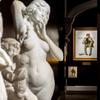








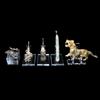
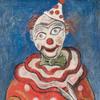
31100x100_c.jpg)





